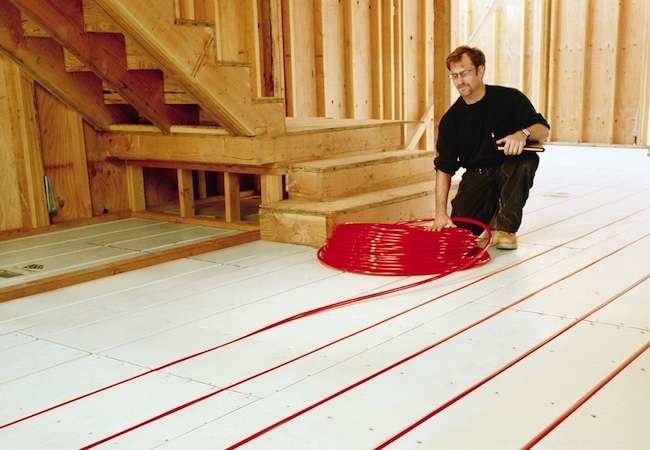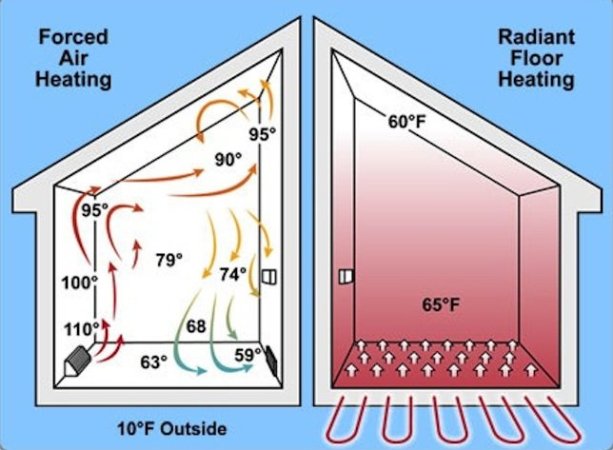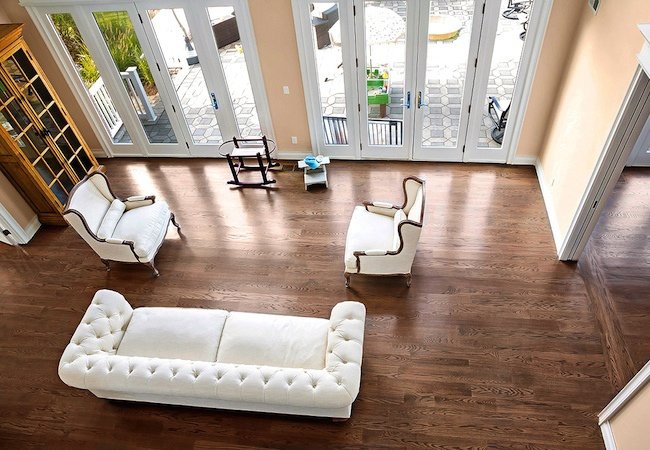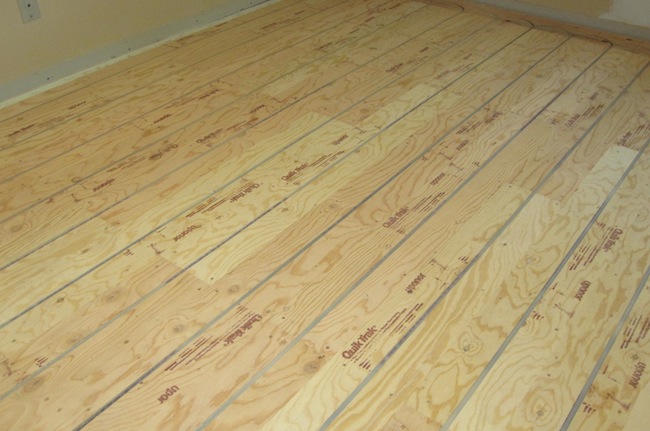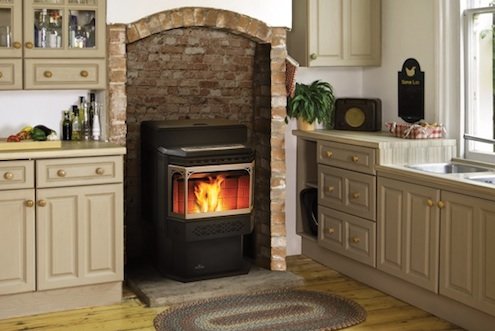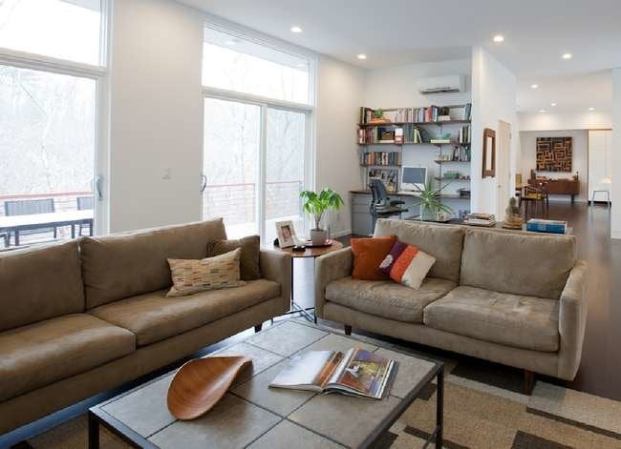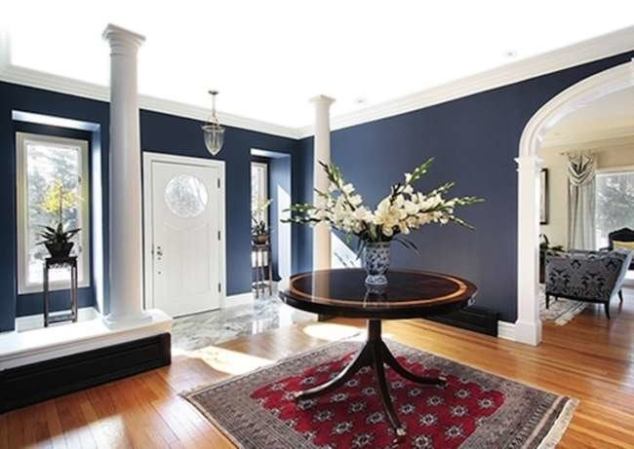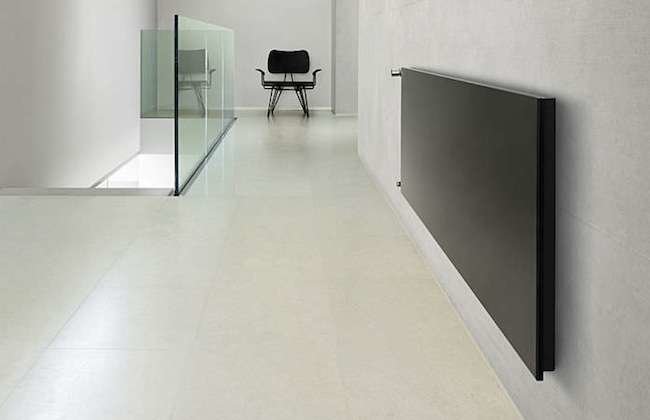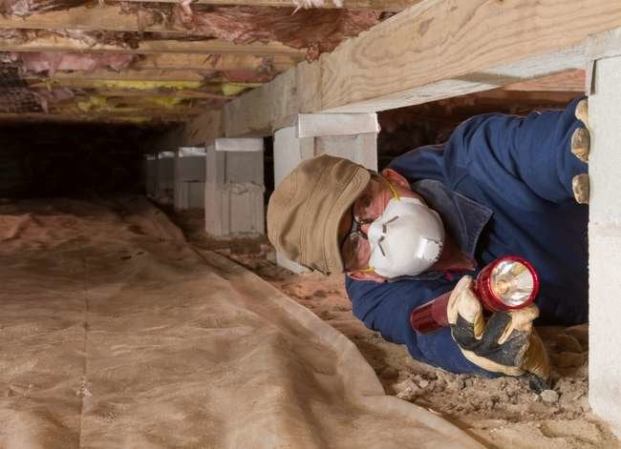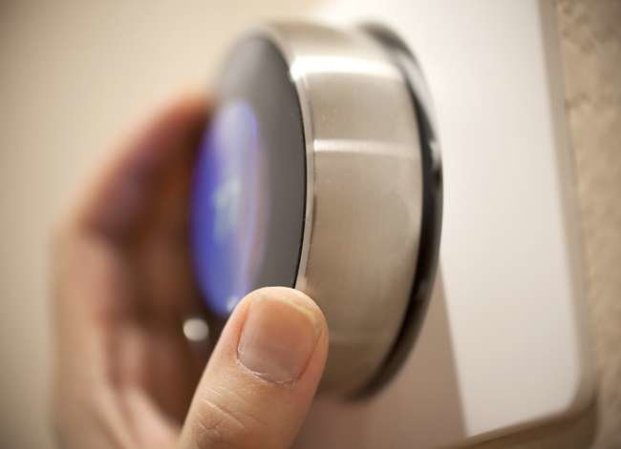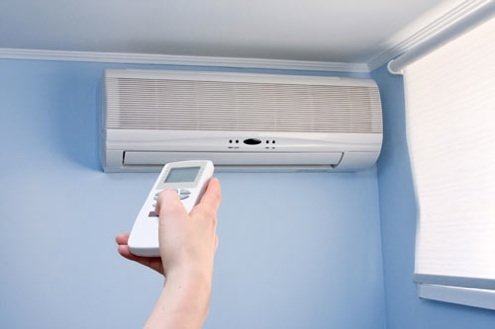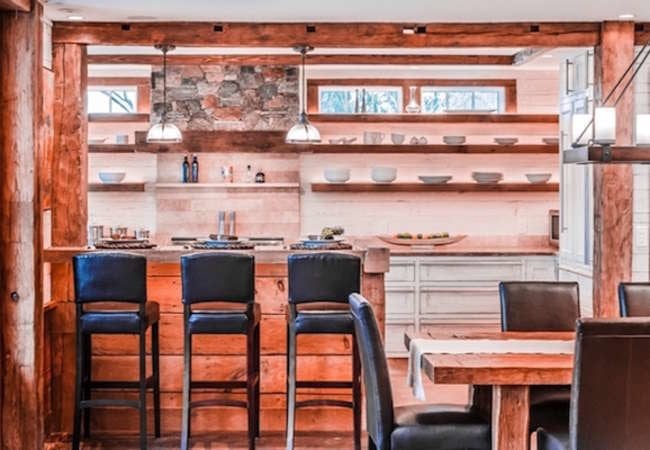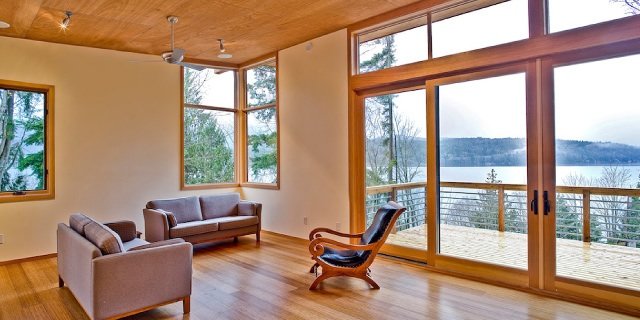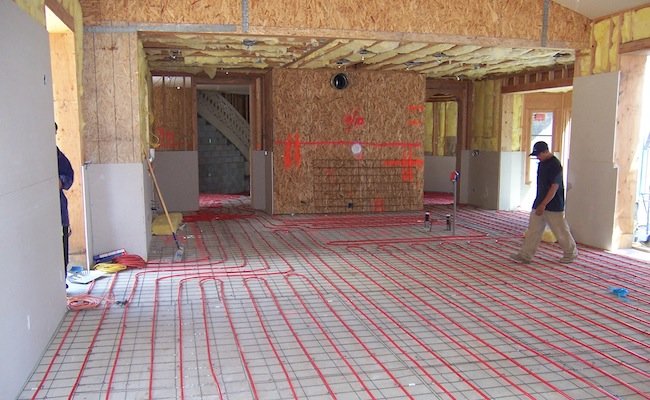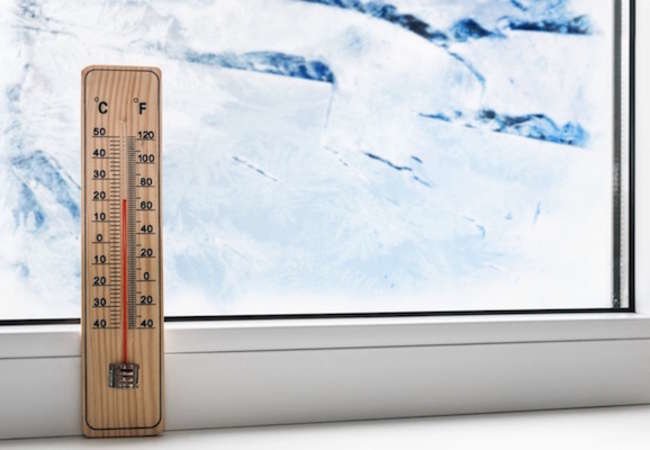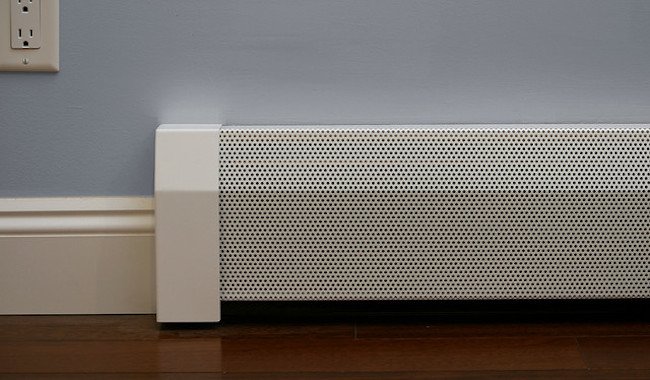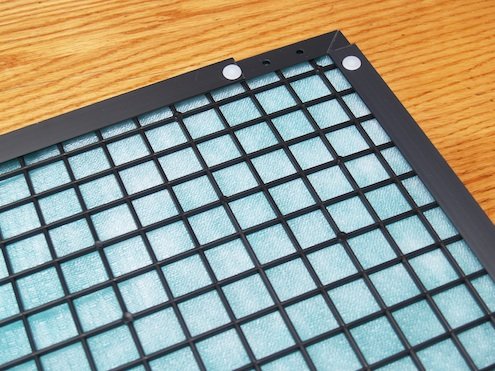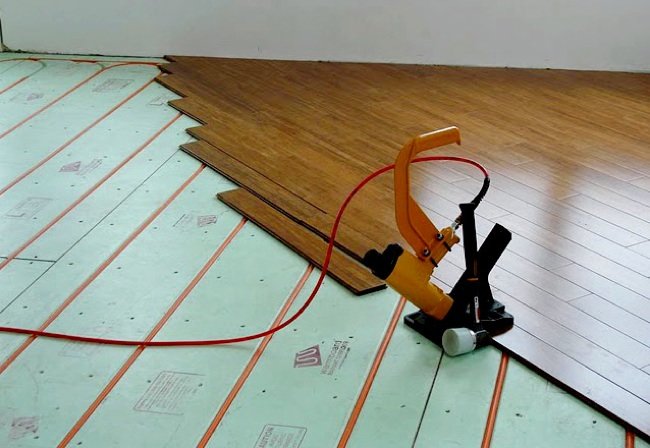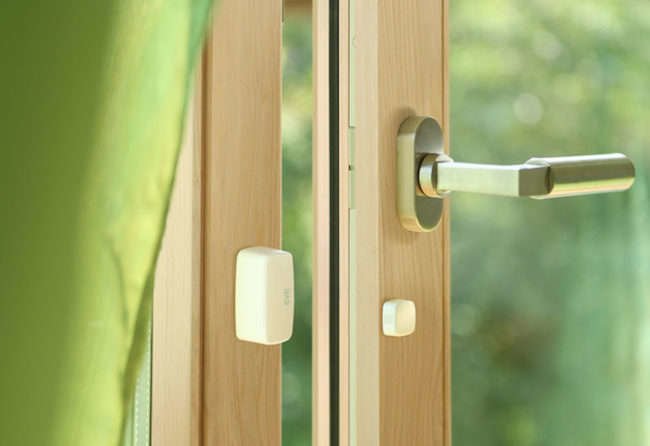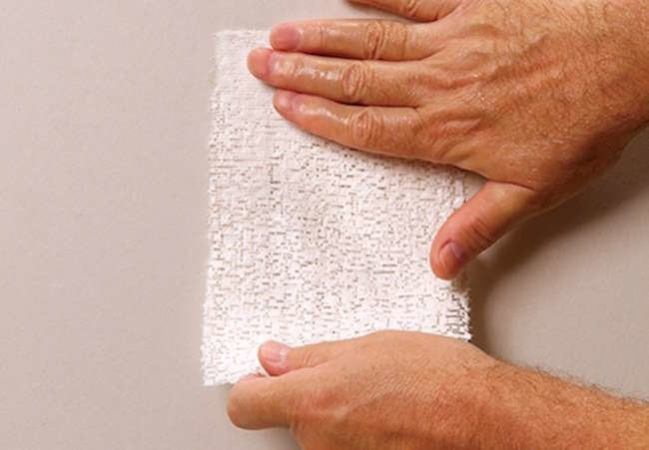We may earn revenue from the products available on this page and participate in affiliate programs. Learn More ›
Myth #1
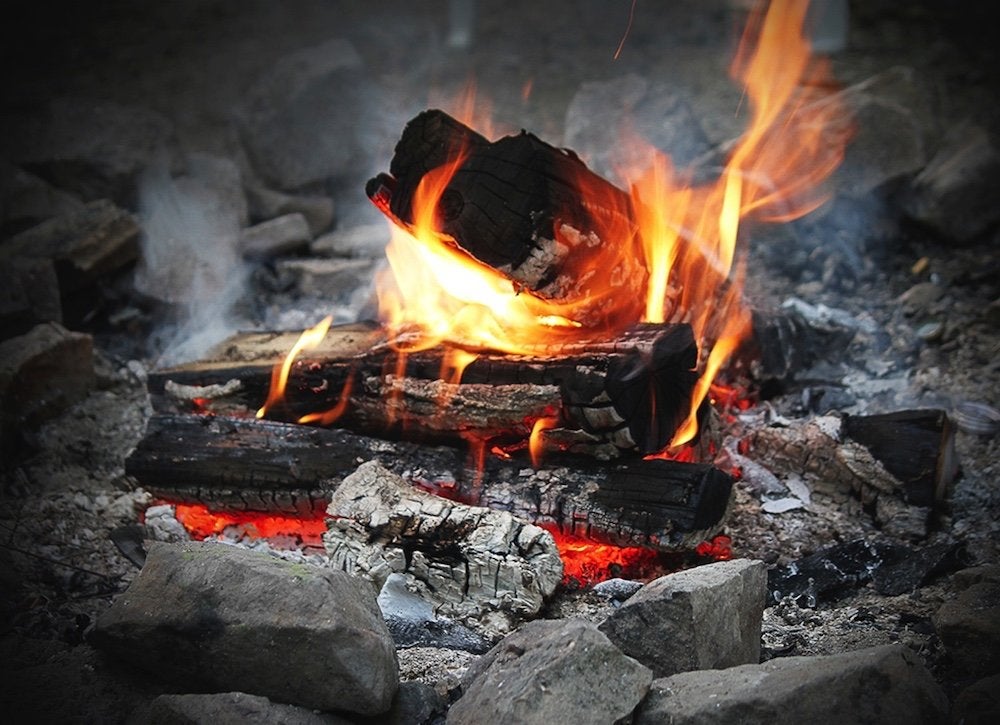
Radiant heating is a newfangled technology. On the contrary, its origins stretch all the way back to Ancient Rome, where closely controlled fires fed heat into air chambers situated under floors and behind walls. In the United States, centuries later, it was none other than Frank Lloyd Wright who helped reintroduce the technology. It’s undergone continual development since then, gradually becoming a viable, if not superior, home heating alternative. Indeed, it may have taken a few thousand years for manufacturers to get right, but make no mistake, radiant heating has arrived.
Related: Thousands of Years in the Making, Radiant Heating Arrives
Myth #2
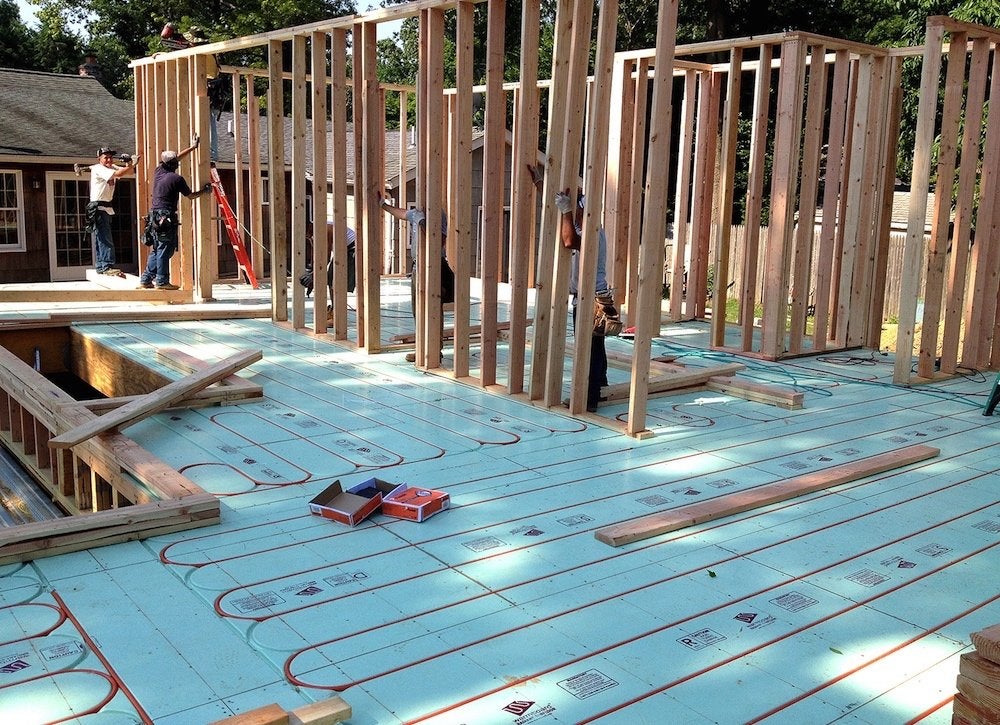
Radiant systems heat the floor, not the home. That’s only true in certain cases, specifically with electric in-floor products meant to provide supplemental warmth in, say, the chilly master bath—or in any space the primary heating system (e.g., forced-air) fails to keep comfortable. That’s compared with hydronic radiant systems. The latter are not supplemental. On the contrary, hydronic radiant systems are installed instead of, not in addition to, a conventional heating system. Indeed, radiant systems like Warmboard deliver heat, not only to the floors, but throughout the entire home.
Related: Heat Your Entire Home with a New Radiant Heating System
Myth #3
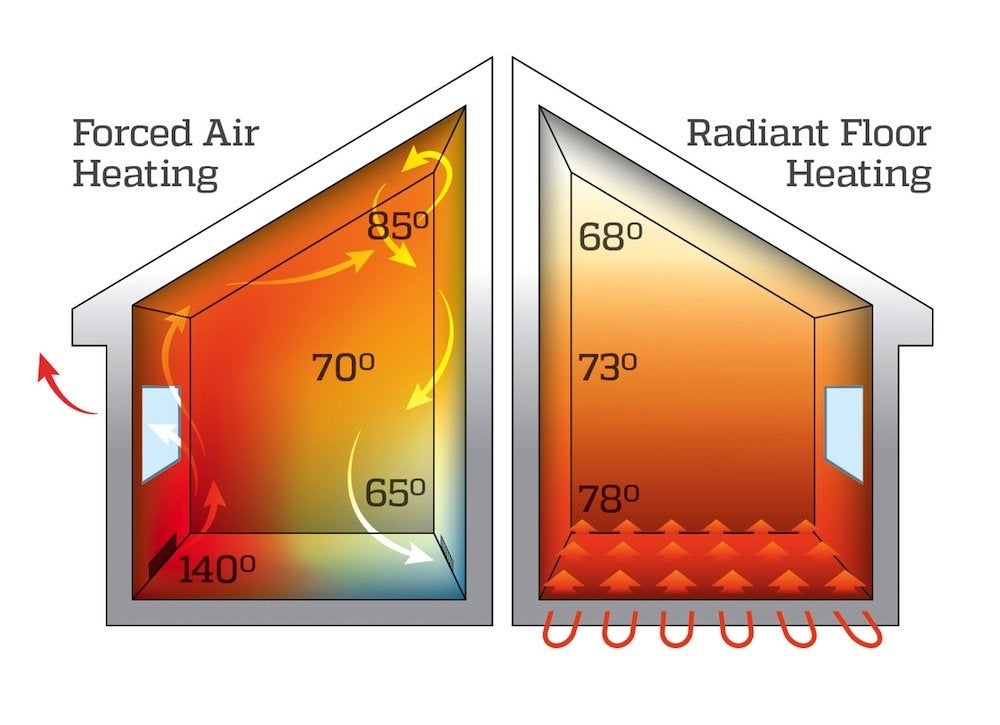
Because heat rises, radiant systems are doomed to fail.
Actually, heat doesn’t rise. Hot air rises. That’s why forced-air systems are so often ineffective. When furnace-heated air blasts into a room, there’s momentary comfort. But then the warm air swiftly rises to the ceiling, leaving cool air in its place. Uneven temperatures are inevitable. Rather than transmit air, radiant systems transmit thermal radiation. Eventually, thermal radiation warms the air, but first it warms the cooler entities it encounters—the floor, the furniture, and yes, the people standing or sitting in the living space.
Related: Radiant Heating 101
Myth #4
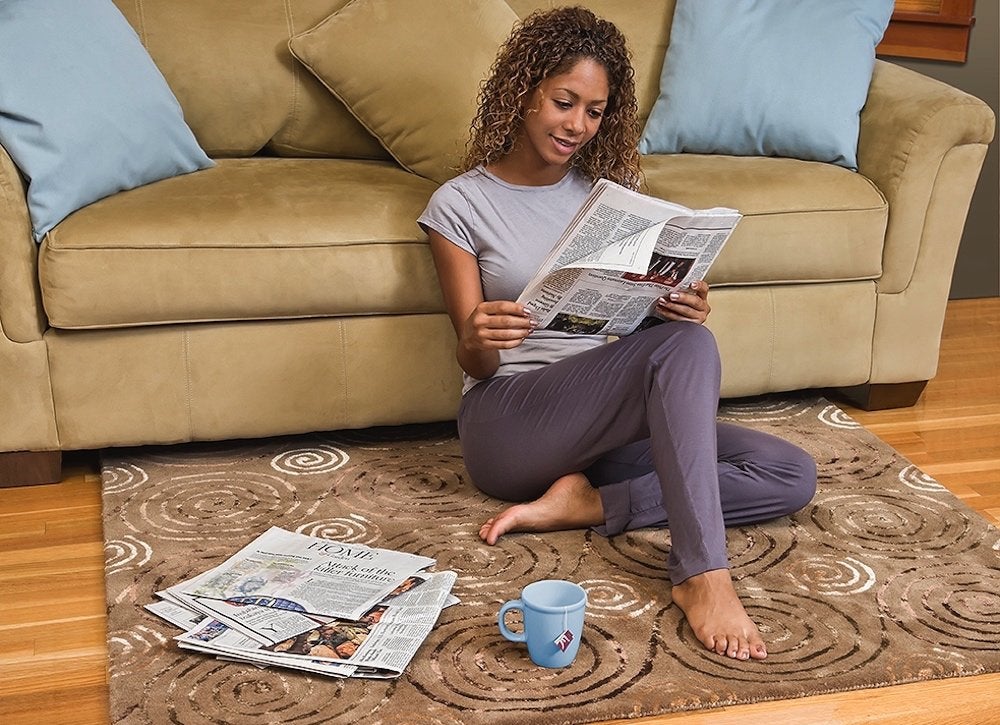
Radiant heating is all about energy efficiency. Forced-air systems are notoriously inefficient, in part because air ducts leak—often enough to diminish efficiency by over 20 percent. Plus, if and when warm air reaches the living space, it soon ends up, not where you can feel it, but hovering near the ceiling. By minimizing the heat loss associated with forced-air, radiant heating maximizes energy savings. But while homeowners appreciate lower bills, they truly love radiant for another reason: It’s even, “everywhere” warmth that arrives silently and without allergy-causing dust.
Myth #5
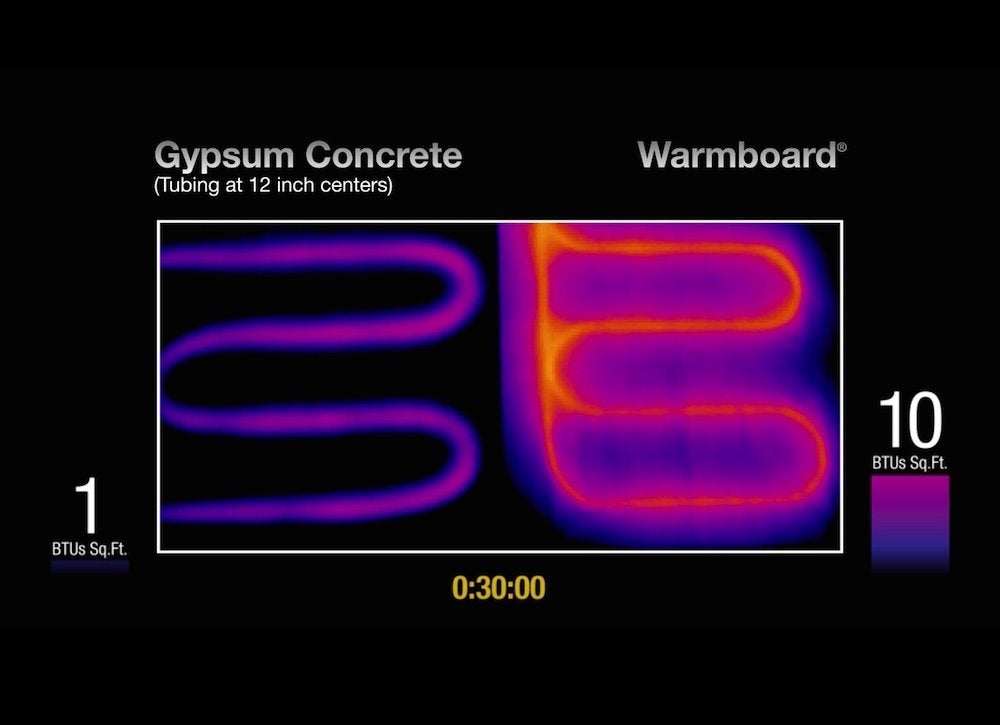
Radiant heating takes forever to warm up. That may be true in some cases, but not all radiant heating systems are equal. The least responsive are those with hydronic tubes set into thick slabs of concrete. Though concrete can absorb and store a considerable quantity of heat, it’s very sluggish. When used in home heating systems, it forces you to wait both while it warms up and cools down. Warmboard replaces concrete with aluminum, a material that conducts heat 232 times better than concrete. That way, when you adjust the thermostat, Warmboard panels respond right away.
Myth #6
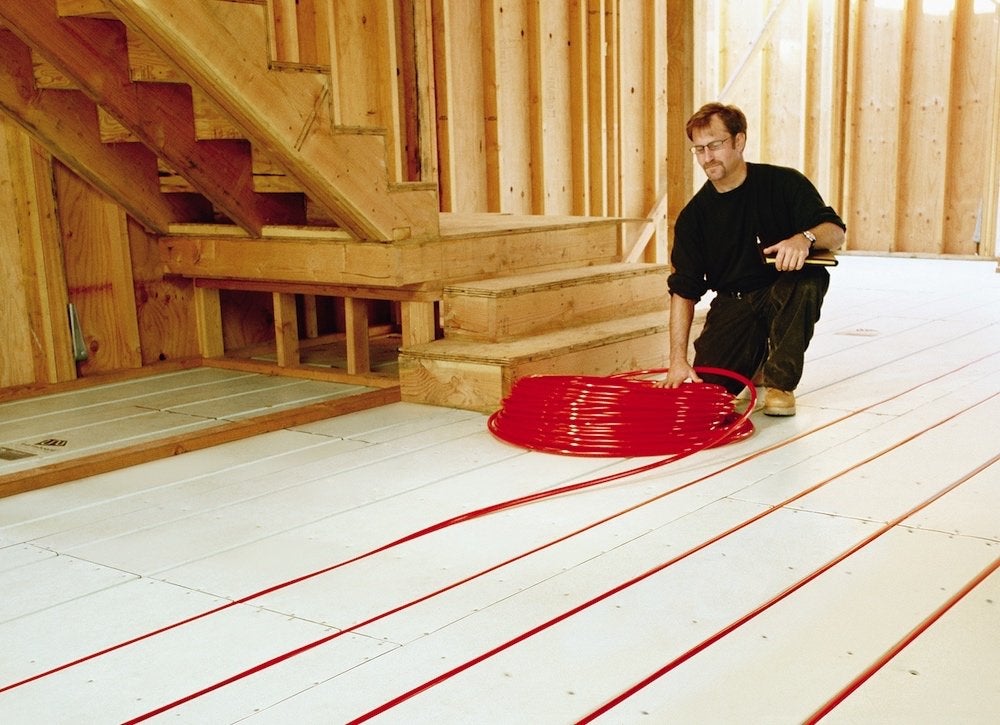
Radiant heat does not offer precision control. Wrong. Radiant systems offer an unprecedented degree of control, because they are uniquely well suited to zoning. Whereas in a traditional system, a single thermostat controls the entire house, zoning allows you to set different temperatures in different rooms. That way, you don’t pay to heat unoccupied rooms. And, no matter the temperature preferences of your family members, everyone can be comfortable at the same time. If traditional heating provides a one-size-fits-all solution, then zoning offers a custom, tailored fit.
Myth #7
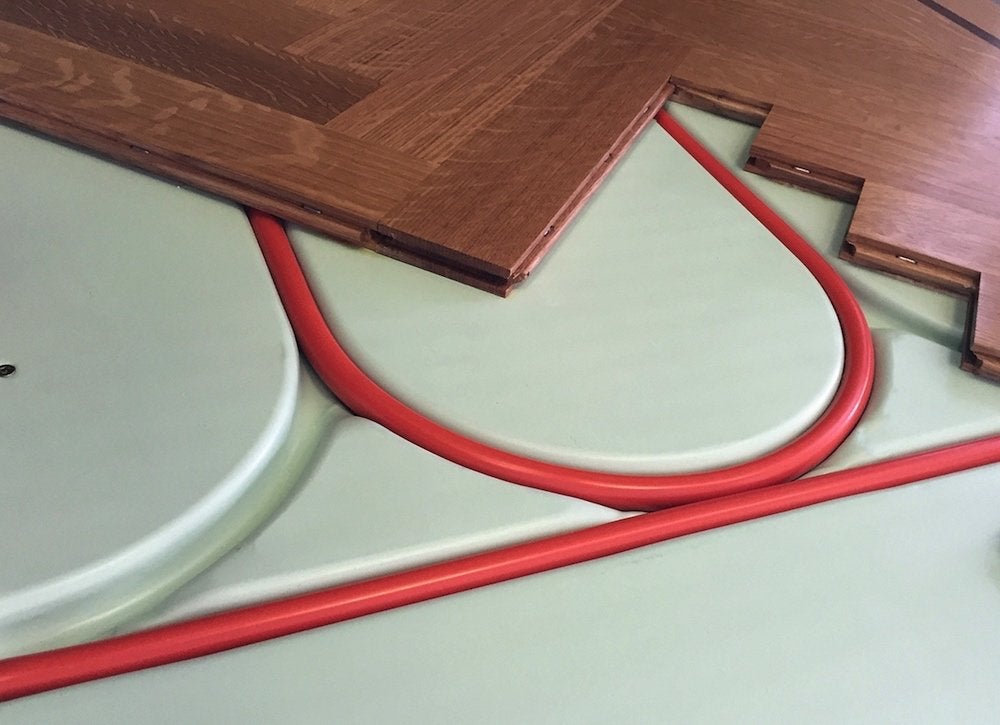
Not all types of flooring can be used with radiant heating. In the past, popular wisdom held that only certain materials were suitable accompaniments for a radiant system. While professionals approved of tile, stone, and concrete, they cautioned against hardwoods and carpeting. Fortunately, like any other technology, radiant heating has come a long way in recent years. Today, you can pair Warmboard panels with virtually any commonly used floor material. Warmboard gives you total design freedom. You don’t have to make any sacrifices to be comfortable.
For More…
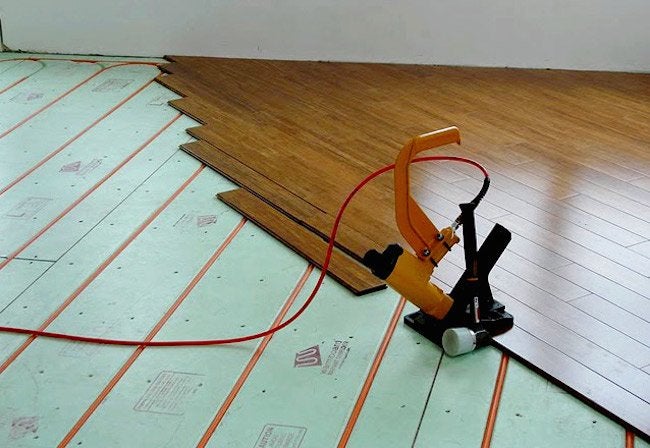
For more about radiant heating, consider:
When’s the Right Time to Install Radiant Heating?
